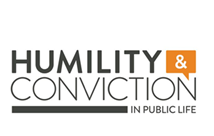SHOULD WE PUBLICLY EXPRESS ANGER?
15 July 2019
Anger is a red mist, which blinds us. It blinds us to the good in other human beings, and to the danger in violent or uncompromising action. Accordingly, expressing anger in public spaces is detrimental to the cultivation of mutual trust and to the pursuit of justice. Or so it is often said. In the early days of his 2020 presidential campaign, Joe Biden told an assembled crowd in Philadelphia: ‘Some say Democrats don’t want to hear about unity. That they are angry, and the angrier you are, the better. … Well, I don’t believe it.’ More famously, Martin Luther King, Jr., once remarked that Malcolm X’s ‘fiery, demagogic oratory in the black ghettoes … can reap nothing but grief.’
Yet many seem to suggest precisely the opposite. For the poet and activist Audre Lorde, anger is a ‘spotlight’ which is ‘loaded with information and energy’. Or take William Lloyd Garrison, who insisted that, when exposed to Frederick Douglass’s enraged anti-slavery rhetoric, the anger he experienced rendered his perception of slavery’s injustice ‘far more clear than ever’. Anger, both are suggesting, is a source of knowledge. And publicly expressing anger is a way of spreading that knowledge.
But how can Lorde and Garrison possibly be right, if—as popular wisdom would have it—anger blinds us? How can anger be both a red mist and a spotlight? How can it reveal truth, if it also obscures it? To make sense of this puzzle, we need to look more closely at emotions more generally. Emotions typically involve distinctive bodily feelings. When you’re angry, you might feel hot, have an increased heart rate, or even tremble. But there’s more to emotions than bodily feelings. Emotions also have a cognitive dimension. They represent objects in our environment as being a certain way. They modify the way we see, imagine, or remember things. They are, in other words, ‘distinctive ways of seeing a situation’.
Distinctive how? First, emotions are sources of salience. They highlight particular features of our environment, and bring them into focus. Different emotions highlight different kinds of things. Fear, for example, puts a spotlight on potential sources of danger. If I walk home at night and am afraid, my fear highlights the street’s emptiness, the absence of lighting, and the footsteps behind me. Grief, on the other hand, fixes your attention on what you’ve lost. This salience function of emotions is hugely important. We live in extremely complex environments, which bombard us with all kinds of information. By making some pieces of information more salient than others, emotions help us navigate these environments by processing information efficiently.
The second important cognitive property of emotions is that they can deliver information that we don’t yet have a label or concept for. In this respect, emotions are similar to visual perception: just as visual perception allows us to discriminate between more shades of blue than we have words for, so too emotions can help us sense or appreciate normative issues (danger, loss, injustice) even whilst we lack the words or concepts needed to name them.
Consider what this means for anger and its public expression. The distinctive object of anger is not danger or loss. It’s injustice or wrongdoing. So, as a source of salience, anger highlights potential sources of injustice. This matters, because injustice—even grave injustice—is often hidden or masked. For example, when the ideology of the American Dream asserts that success is within anyone’s reach, this masks the injustice of egregious inequalities. Expressing anger is a way of inducing in others a state of alertness to injustice, which helps them see through such ideological distortions. Anger casts a spotlight on shrouded injustices.
The second upshot is that, as an emotion, anger can get us to register or sense injustices, even when we lack a word or concept for those injustices. This too matters greatly. We often lack the labels needed to understand specific injustices, and to communicate about them. There was a time when, although sexual harassment was rampant, the concept of sexual harassment did not yet exist. In such settings, anger serves as an alarm bell, which helps us sense that—though we cannot yet name this wrong—a wrong is taking place. And arousing anger in others, by extension, is a way of getting them, too, to sense that something is wrong.
So, there are good reasons to think that public expressions of anger constitute an important spotlight, which exposes injustice. But notice that this is actually consistent with the idea that anger also blinds us. It’s not that Malcolm X is simply right and King is simply wrong. Far from it. The fact that anger blinds us is actually a flipside of the fact that anger selects information and renders it salient. Salience is comparative. What this means is that, when anger makes potential sources of injustice salient, it also makes other things unsalient. Anger therefore comes at a cost: when I am on the lookout for how others may have wronged me, I am more likely to overlook what there is to trust, love, and respect in them.
This cost matters. Tackling grave injustices requires social cooperation, which in turn depends on mutual trust and respect. So, while we shouldn’t dismiss anger as a mere red mist, we should also recognise that spotlights too can narrow our vision. The lesson is that we need public expressions of anger, but we also need their opposite. Malcolm X and King may have disparaged each other publicly, but they depended on each other—sometimes explicitly so. While King relied on Malcolm X to expose racial injustices in uncompromising terms, Malcolm X relied on King to make visible the possibility of progress and reconciliation. The same goes for the Democratic Party. Calls for anger and calls for unification may seem opposed. But we should steer clear of the temptation simply to choose one and reject the other.
- October 2025
- September 2025
- August 2025
- July 2025
- June 2025
- May 2025
- April 2025
- March 2025
- February 2025
- January 2025
- December 2024
- November 2024
- October 2024
- September 2024
- August 2024
- July 2024
- June 2024
- May 2024
- April 2024
- March 2024
- February 2024
- January 2024
- December 2023
- November 2023
- October 2023
- September 2023
- August 2023
- July 2023
- June 2023
- May 2023
- April 2023
- March 2023
- February 2023
- January 2023
- December 2022
- November 2022
- October 2022
- September 2022
- August 2022
- July 2022
- June 2022
- May 2022
- April 2022
- March 2022
- February 2022
- January 2022
- December 2021
- November 2021
- October 2021
- September 2021
- August 2021
- July 2021
- June 2021
- May 2021
- April 2021
- March 2021
- February 2021
- January 2021
- December 2020
- November 2020
- October 2020
- September 2020
- August 2020
- July 2020
- June 2020
- May 2020
- April 2020
- March 2020
- February 2020
- January 2020
- December 2019
- November 2019
- October 2019
- September 2019
- August 2019
- July 2019
- June 2019
- May 2019
- April 2019
- March 2019
- February 2019
- January 2019
- December 2018
- November 2018
- October 2018
- September 2018
- August 2018
- July 2018
- June 2018
- May 2018
- April 2018
- March 2018
- February 2018
- January 2018
- December 2017
- November 2017
- October 2017
- September 2017
- August 2017
- July 2017
- June 2017
- May 2017

